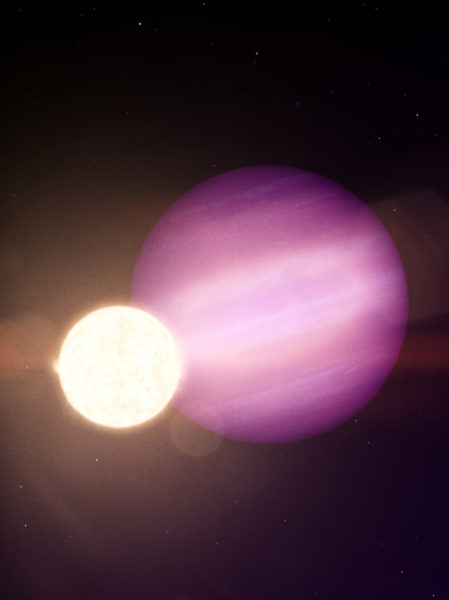
Two international teams of astronomers, aided by Vanderbilt University research, have discovered a diverse pair of exoplanets, which are providing new insights into Earth’s origins and future.
The astronomers identified both exoplanets—that is, planets orbiting stars outside our solar system—following an interstellar survey conducted by NASA’s Transiting Exoplanet Survey Satellite mission, developed in part by a team led by Stevenson Professor of Physics and Astronomy Keivan Stassun.
TOI-849b
TOI-849b, which has a year that lasts 18 hours, is similar in size to Neptune but with a significantly higher mass and density. These contradictory characteristics have led researchers to infer that the exoplanet is the exposed core of what may have started out as a typical gas giant like Jupiter. According to a release, the discovery of TOI-849b is the first of its kind.
The article about the discovery, “A remnant planetary core in the hot-Neptune desert,” was published in the journal Nature on July 1.
There are two theories about how the planet’s core could have become so unusually exposed. TOI-849b might have started out as a gaseous planet that lost its outer atmosphere by being too close to its star or colliding with another planet. Or alternatively, it perhaps never had an atmosphere to begin with, due to delayed formation. Regardless, its existence provides astronomers a unique opportunity to study the core of a planet—something that is not possible in our own solar system.
“Through the discovery of TOI-849b, we can wonder whether other planets, including our own, may very well have started out more like Neptune and over time, either because of residual heat during formation or incident radiation from the sun, caused much of Earth’s thicker atmosphere to be boiled off,” said Stassun, the paper’s co-author. “In the case of TOI-849b, we approximate that this happened within the first billion years of the planet’s formation.”
WD 1856 b

WD 1856 b is the remnant of a planet that is orbiting a stellar corpse known as a white dwarf—what was once a sun-like star but now a relic not much larger than the size of Earth. Before the host star collapsed and became a white dwarf, its outer gaseous layer expanded and engulfed WD 1856 b but did not destroy it. WD 1856 b is the first known planet that has remained intact after such an event, opening many questions about how it arrived and survived in its current location.
An article detailing the discovery of WD 1856 b, “A Giant Planet Candidate Transiting a White Dwarf,” was published in the Sept. 17 issue of Nature.
“Before this discovery, many astronomers assumed that the search for planets orbiting white dwarfs was pointless. This white dwarf planet tells us that it isn’t,” said Stassun, explaining that astronomers will use this discovery to better understand all planets and their potential habitability. “In about 5 billion years, our own Earth will eventually experience a similar fate, being engulfed by our sun as it dies. Will Earth survive that inferno like this planet has? It is only with a complete set of demographics of planets around different stars that we can piece together the full family tree of planets.”
In a release from NASA, Lisa Kaltenegger, the director of Cornell University’s Carl Sagan Institute, explains, “After a system settles down around a white dwarf, it can remain stable for billions of years as the star cools. In fact, planets in white dwarf habitable zones could maintain conditions favorable for life longer than the time scale predicted for Earth. WD 1856 b suggests planets may survive white dwarfs’ chaotic histories. Now we can think about the intriguing possibilities for life on worlds orbiting these dead stellar cores.”
Stassun expects that both planets will be studied further: TOI-849b by the Twinkle mission, of which he is a founding member, and WD 1856 b through TESS. “Until 15 years ago, all we knew about planets was what we could observe in our own solar system,” he said. “These extreme discoveries put our solar system in context of the larger realm of possibilities of what solar systems across the universe can be like.”
The neurodiverse team of researchers at the Frist Center for Autism and Innovation, which Stassun directs, played a role in creating much of the data visualization for both discoveries.